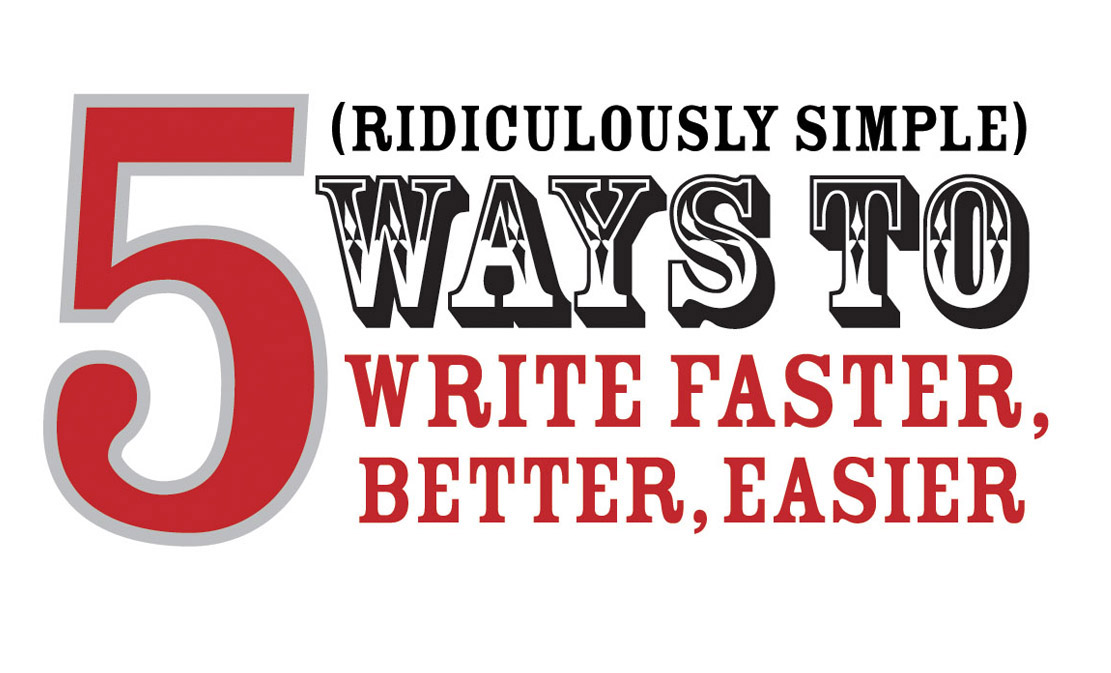Social Media At Work: Arthur L. Jue Interview
 Monday, January 4, 2010 at 10:08PM
Monday, January 4, 2010 at 10:08PM  I'm thrilled to bring you an exclusive interview with Arthur L. Jue, one of three authors who wrote the brilliant new book, "Social Media at Work: How Networking Tools Propel Organizational Performance."
I'm thrilled to bring you an exclusive interview with Arthur L. Jue, one of three authors who wrote the brilliant new book, "Social Media at Work: How Networking Tools Propel Organizational Performance."
If you're interested in learning how social media can drive employee engagement and performance to higher levels, then grab this book; it's a "must-read!" I'd like to give Arthur a big "thank you" for sharing his time, energy and insights in answering my eight questions.
1. One of my favorite quotes in the book serves as the book's "Big Idea:" "Within organizations, social media demonstrates a new reality– the reality that employees are co-creators of organizational success rather than servants of the company who simply salute and take orders." Can you expand on that a bit more?
A huge paradigm shift has been underway for awhile--a rethinking of assumptions that organizational viability depends on rigid command-and-control power structures. Under “old” industrial models, success was attributed to charismatic leaders taking charge and calling the shots, while followers align to implement “the vision” via pre-defined roles. Yet, with society’s increasing complexity, organizational sustainability is less about performance in formal hierarchies and more about optimizing relationships; less about producing products and services, and more about collaborative innovation.
No one knows everything, but we all know something. Given our widespread information overload and increasing institutional failures, success depends not just on leaders at the top but on everyone leveraging their collective wisdom. Social media supports this interdependence in amazing ways. We provide several examples in our book, showing how social media facilitates greater egalitarianism, participation, and engagement in the workplace.
2. You mention: "Employee engagement is about the basic need for people to be part of something larger than themselves, to contribute in a meaningful way...our need to affiliate with others is seen in the formation of clans, tribes, and societies." How do social media tools enable this concept to become reality?
Two key words come to mind: connection and contribution. Many variables influence engagement, but simply stated, engagement tends to arise from connections that increase contribution, engendering a greater sense of belonging, which is a fundamental human need. Social media connects employees in new ways that facilitate a redefinition of traditional roles, eliciting more freedom of expression and heightened commitment. New avenues for expressing uniqueness and diverse perspectives help employees perceive of their organizational affiliations as more meaningful.
Social media changes the leadership dialog from “how do we motivate desired behaviors” to “how do we create stimulating interactions and experiences?” In turn, this focus shapes the scope, intensity, integration, autonomy, and fluidity of employee connections—they become technology mediated interactions capable of enhancing esprit de corps and organizational performance.
3. Some organizations extend their social media tools beyond current employees. For instance, they encourage retirees to become "brand ambassadors" by using social media tools internally. What competitive advantage is there in this strategy?
Although we typically think of being a “brand ambassador” as an external marketing role, companies brand themselves internally as well, for example to new hires. In our book we talk about how some companies actually connect current and retired employees for this purpose. Retirees have an advantage in understanding a company's value from both inside and outside. Tapping their cumulative knowledge and experience can help to perpetuate positive brand images. Through social media, retirees can also spread “memes”--stories, ideas, symbols, and beliefs that replicate quickly, convey company values, and reinforce organizational culture.
Studies show that fostering a positive culture and climate increases retention, lowers replacement costs, and improves productivity, thus enhancing profitability and sustainability. Social media is a perfect tool for accelerating this leavening effect.
Some companies like Southwest Airlines consistently demonstrate the wisdom of prioritizing an organization’s strategic focus on internal culture and employees above external marketplace success and customer satisfaction. Enabling retired employees to continue contributing via social media can be an innovative approach to advancing a similar strategy.
4. As Baby Boomers retire, there will be a severe shortage of talent. Can social media concepts be embraced internally by organizations to gain an advantage in the "war on talent?"
Yes! We discuss at length in our book that technology savvy Gen X employees born between 1982 and 2002 as well as Gen Y employees born between 1965 and 1981 are entering and assuming key leadership positions in the workforce.
Baby Boomers born between 1946 and 1964 are retiring in increasing numbers, but the “new supply” of Gen X and Y talent isn’t keeping pace. Fierce competition for hires is expected to grow over the next decade. Gen Y hires will demand the availability of social media at work as a “hygiene factor”--an entitlement that spurs dissatisfaction if missing. Understanding and leveraging social media will become a critical talent management issue.
Tools and technologies such as blogs, wikis, and online multimedia will factor prominently into organizational strategies for attracting and retaining new employees in the workforce.
5. On one hand, so many organizations perceive social media as a waste of time. On the other hand, the same organizations constantly seek ways to improve innovation, process information faster, collaborate easier, etc. Seems like these social media tools are the gift so many organizations have been waiting for. Where's the disconnect?
Similar concerns were raised with the advent of email—many of them valid. As a matter of fact, email is still a blessing and a curse today, but we’ve somehow learned to embrace the technology anyway. What would we do without it?
In some respects, I think initial resistance to social media is following the same adoption curve. It’s a classic change management issue. The same principles that apply to planning any large scale change can apply to adopting social media in organizations: create a compelling case, galvanize a critical mass of change agents, communicate often, sustain momentum, celebrate wins, and then reinforce the culture. Of course, while social media can be implemented on a defined schedule, individual psychological transition tends to occur at its own pace--and by demographic.
Millennials (Gen Y) have been among the earliest adopters, whereas Boomers are just beginning to embrace social media as a group. This creates conflict and uncertainty. Still, I think we’re reaching a “tipping point” where social media will soon become pervasive, at least in the corporate milieu.
6. You share an interesting concept called, "Open Space Technology." What is it and why should an organization care about it?
Open Space Technology (OST) draws on principles of chaos and complexity theory, such as self organizing systems, to offer a methodology for facilitating critical conversations in face-to-face meetings that achieve breakthrough outcomes in relatively short timeframes.
Harrison Owen, the father of OST, has written extensively on the subject, and there is a lot of info available on the Web. Harrison and I were talking on the phone one day about OST when it occurred to me that OST and social media are really quite similar--they’re both applications of chaos and complexity theory in different socio-technical contexts. Whereas OST reflects microcosms of complex adaptive systems at work in the physical world, social media reflects the same thing in the virtual world.
During an OST facilitated meeting, for example, practitioners adhere to a “Law of Two Feet,” moving from one cluster of conversation to another wherever they feel that they are learning and contributing optimally.
Similarly, social media involves an organic flow of self-organized, emergent interactions online. Whoever shows up in OST is considered the right person because s/he cared enough about the subject to attend. The same is true for social media. Whenever people comment on or contribute to blogs, they are “showing up” because they care about the topic under discussion. Social media is really one grand OST experiment using the Internet as our meeting place. That said, studying principles of OST in designing online experiences can help organizations gain valuable insights about how to best utilize social media internally.
7. There are multiple ways social media can take off within organizations. Briefly, what are they, and what are some considerations that can help the process?
Rather than one best way to implement social media, different approaches can work, depending on an organization’s culture. For example, many companies use sequential, top-down, structured efforts, while others are more experimental, spontaneous, and bottoms-up. Yet, every company should remember that social networking is about fostering connections between people. Technologies and tools should be developed that can cultivate authentic communication and build communities of trust.
Likewise, form follows function. Just as interior decorators consider occupant tastes in striving to design inviting living spaces, wise social media developers strive to create engaging human experiences by listening to input from end users. They focus on individual and organizational needs first, technology second. They ask themselves where greater communication, collaboration, or community among employees could accelerate strategies for productivity or sustained performance. Then, they involve pilot groups of early adopters to test the viability of various solutions. Incidentally, implementers might also consider using open source solutions to avoid reinventing the wheel.
8. What do you think is the best way an organization can tie its business strategy to its internal social media strategy?
Well, first, we need to understand the business strategy and map it to the organization’s needs. That involves a lot of questioning and appreciative inquiry. I also like the idea of measurement. Find out an organization’s definition of success and measure how well social media supports it. Not everyone agrees with this approach—I’ve heard Peter Block argue that measurement is an “obstacle to the future.” We should definitely heed such caution, but given our current economic system, if we use metrics wisely, I think they can still play an important role.
One of my favorite quotes by Thomas S. Monson is: “When performance is measured, performance improves. When performance is measured and reported back, the rate of improvement accelerates.”
Once we know our business strategy and key success factors, we can gauge how supportive social media is through metrics that provide insight about its level of relevance, effectiveness, and impact.
Thanks, Arthur!
P.S. If you enjoyed this interview, you can share it by using the "Share Article" below.



